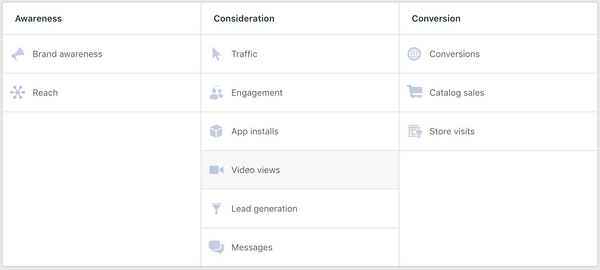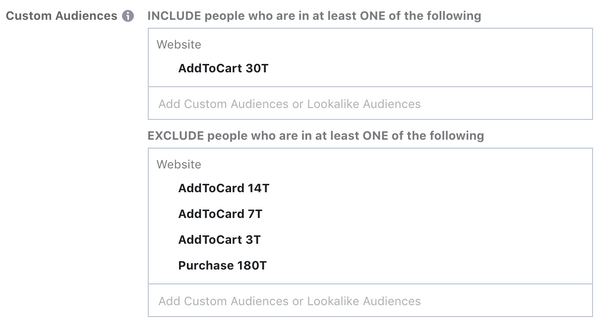You’ve just purchased a new Shopify store, and you’re looking for ways to grow it as fast as possible?
You’re trying to figure out the best ways to get qualified traffic to your side and convert them into paying customers, but you are not sure where to begin?
It is not a secret that Facebook and Instagram Ads are the best platforms to sell physical products. If done right, Facebook advertising can bring incredible results and help to scale your business fast.
However, in reality, Facebook is far from perfect. With Facebook Ads being easy to get into but hard to become advanced at, most advertisers struggle to achieve both scale and a healthy return on investment (ROI).
The following scenario happens all the time:
You start having some success on Facebook with a reasonable ROI on a low amount of ad spend for testing. However, anytime you try to higher your ad budget and scale, the ROI goes down, and you kill your already working Ad Sets. Forever.
If this sounds familiar, don’t worry! This article is made to help you out of this slump and get your ads profitable at scale.
Understanding the Facebook Ads Journey
Most companies try to sell on the first contact and ignore one of the main tenants of marketing.

In the digital age, it’s more important than ever to understand the customer buying journey from the customer’s side and optimize from there.
As an eCommerce store owner, you need to understand the journey it takes to turn a prospect into a customer, track them and make data-driven decisions by identifying the right Key Performance Indicators (KPI).

To start, target people that have never engaged or bought from you. You can use data from your Facebook Pixel to gather information and build custom audiences inside the Facebook Business Manager.
We usually split the buying process into 7 Steps. (the “initiate checkout” stage, right between “add to cart” and “clients” can be considered in the “add to cart stage” to make it’s audience segment bigger and more relevant to Facebook’s Algorithm)
Understanding this process helps you to find exit points of prospects and allows you to retarget them with more relevant content.
For example, someone who viewed a product on your shop page (view content) is more likely to become a customer, than someone that has only watched or visited the landing page of your website (page view) and should, therefore, be treated differently than customers in an earlier stage.
Your goal should always be to find the lowest return on ad spend (ROAS), but it is also important to measure every other KPI in the buyer’s journey as every step affects the next.

All your future clients will start their journey in a prospecting campaign (cold audience) to eventually turn into a paying customer at his or her speed. Therefore, it is still possible to turn prospects into paying customers immediately, but not at the lowest possible price.

You can best achieve this by showing your prospects an educational, short video on Facebook, using Instagram Ads or Lead Magnets to bring them to your site.
When warming up your prospects, use Awareness and Consideration campaigns as your objective. I recommend to in this stage go with Traffic, Engagement or video views.

As soon as your customers reached the ‘view content’ stage, change the focus to dynamic product ads (DPA’s). DPA’s are great for retargeting people with pictures of your products that they have clicked on or even added to their cart. Therefore these audiences are more likely to become paying customers with a higher ROAS than audiences that have only made it to your landing page.
Doing this, you reactivate the desire of purchase and help them to find their desired products more easily.
In over 70% of cases, there is no good argument for a person not buying, that has already put something into their checkout cart. Therefore, it is crucial to your Facebook Ad Strategy to reactivate those potential customers. Not doing this might cost you thousands of dollars in ad spend and takes away the possibility for your potential customer to enjoy your products.
Make sure to always segment audiences using custom audiences, so people don’t get annoyed by seeing too many of your ads. Also, leave purchasers alone for at least 14 days by not retargeting them during that time.

One of the biggest misconceptions I come across helping people with Facebook Advertising is that you can easily change a not working Ad Sets creative to make it work again.
Experience shows that this is a pointless technique as the Facebook Ads algorithm decides on a target audience after 2 or 3 days and never changes it after for that specific Ad Set.
Creative fatigue does exist though! It happens when a person sees your Ad with the same Video or Picture over and over again.
In the picture above, you can see that I use different segments in the existing “add to cart” category. This may look a little extreme to you, but experience has proven that someone who adds a product to their cart will react to messages differently 3 days or 3 weeks after interacting with your brand.
This new daily variation in your Ad Sets will also give you the possibility to avoid creative fatigue for your audiences, as you can differentiate the Ads in your Ad Sets as well.


Last but not least, increase the customer lifetime value of your store by reactivating existing customers through Facebook Ads.
Many store owners tend to exclude everyone that has already bought their product, and it might make sense if your product is in the 5% of one-time product purchases. However, unless you have such a product or a 100% conversion on your Email lists, you need to reactivate existing customers with Facebook and Instagram Ads so that they can buy from you again.
Conclusion
Have a strategy before you start, or start scaling your ad campaigns! There is more to Facebook Ads success than only understanding the journey, but this is the most crucial part in achieving fast growth from the beginning.
Understand how every person on your list is in a different stage and needs different Ad copy and creatives to react on.
Even though it is much work and it sounds like it’s difficult to achieve, the potential upside in increased sales, faster inventory turnover, lower customer acquisition costs and higher customer lifetime value etc. are incredible. Increasing your advertising budget is often worth the risk, and by understanding your customer’s journey through the Facebook and Instagram universe, you will minimize the risks.
As featured on: https://exchangemarketplace.com/blog/facebook-ads-journey-grow-your-new-store-faster-by-understanding-your-customers?fbclid=IwAR1CCsjAkI8DReSX_lPZkxUK8QueHdOVe-gzhlA_ojubnxmKIda7OU82mFQ




About The Author: Admin
More posts by admin